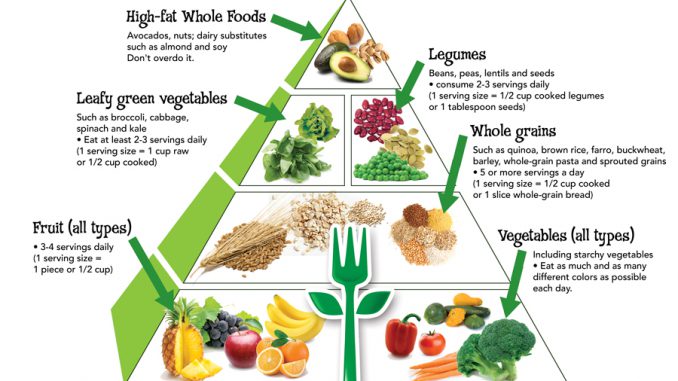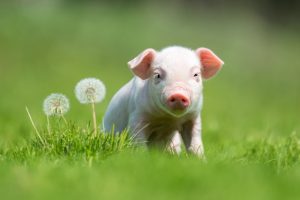
The THANOS Plan.
September 3, 2021
Your First Song on Guitar
September 16, 2021- animals have a soul and feel pain
- concept of veganism
- difference between vegans and vegetarians
- indian vegan recepies
- is veganism a lifestyle
- save the torture and killing of animals
- vaccines and veganism
- vegan products in india
- veganism
- veganism in India
- vegans
- vegetarian
- vegetarianism in India
- which products are excluded in veganism
“You eat the yellowtail, I’ma eat the plant-based
I ain’t chewing on no food, with two eyes and a face
Got a new attitude, gotta stay elevated”
-Black Eyed Peas
Before getting into this topic, I would like to clarify that I believe every human being has a choice to live the life they choose.
After all, when we are facing the pearly gates we answer for our own Karma and not anyone else’s.
This is purely information and aimed towards providing the knowledge for one to make an informed decision about the lifestyle they choose to adopt.
The Father of Veganism: Vegetarianism
Well, India is not new to the concept of vegetarianism.

The vast cultural and religious differences of the numerous casts of different ethnic states throughout the country have a fair share of this lifestyle followers.

The Orthodox vegetarians would not eat a dish prepared in a vessel previously used for any meat preparation and some would even shun the entire kitchen, preferring one in which only vegetarian food is prepared.
So what is Vegetarianism exactly?
Vegetarian diets have been the norm in India since as early as 700 B.C.
There are several sub-genres in existence but the original version is a pure-vegetarian lifestyle. This lifestyle states that a vegetarian is someone who does not eat any meat, poultry, game, fish, shellfish, or by-products of animal slaughter.
Unfortunately, Just like most things in life it has been diluted through the ages, and that has infiltrated orthodox cultures with a gen-Z paradigm shift.
Individuals of the present generation may practice vegetarianism for a variety of reasons, including health, ethics, environmentalism, and religion.

The original Orthodox Vegetarian has thus been sub-categorized as:
Lacto-Ovo vegetarians: Vegetarians who avoid all animal flesh, but do consume dairy and egg products.
Lacto vegetarians: Vegetarians who avoid animal flesh and eggs, but do consume dairy products.
Ovo vegetarians: Vegetarians who avoid all animal products except eggs.
Individuals who choose not to consume meat or poultry but include fish in their diet are considered pescatarians.
Part-time vegetarians are often referred to as flexitarians.
Pescatarians and flexitarians do eat animal flesh on occasion and do not technically fall under the definition of vegetarianism.
Additional Information on a Pure Vegetarian Lifestyle.
“By the way, the food depicted in the above Pictures is awesomely tasty”
Where does Veganism come in?
Veganism can be considered to be the strictest form of Vegetarianism and beyond.
The beyond refers to the rejection of any product whose manufacture has anything to do with an animal source for its raw ingredients.
This effectively takes Veganism beyond the realm of being just a diet and firmly plants it in the definition of being a lifestyle.
There are no Lacto-ovo, Lacto, Ovo, Pescatarian, or Flexitarian Vegans.
You either are a Vegan or aren’t.
Veganism is a lifestyle with a strong foundation in animal rights. Vegans, therefore, avoid purchasing clothing items containing silk, wool, leather, or suede and boycott companies that test on animals and only purchase cosmetics that are free of animal by-products.
The most hardcore Vegans also tend to steer clear of circuses, zoos, rodeos, horse races, and any other activities involving the use of animals for entertainment.
Many environmentalists adopt a vegan diet to reduce their impact on the earth’s resources and do their part against climate change.
The environmentally conscious will use less water, boycott private vehicles or use pedal power, and recycle, but this is just the tip of the iceberg when compared to quitting meat. If the world went vegan, emissions would be reduced by two-thirds and countries would save $1.5 trillion in climate damages, according to an Oxford University study.

If every family in the United Kingdom committed to eating vegan for just one day a week, it would have the environmental impact of taking 16 million cars off the road. That is equivalent to 73,600,000 metric tons of carbon emissions per year.
By going vegan for a month, one can save 33 animals, the use of 33,000 gallons of water, the destruction of 900 square feet of forest, 600 pounds of CO2 gas, and 1,200 pounds of grain. In the end, whether you want to eat vegan or not, our planet is dying and we have to change that.
Why not give the Vegan lifestyle a chance?
So what can Vegans eat?

Refer to the diagram above and the main diagram of this post for pictorial information.
In addition:
Protein
Cashew nuts, pumpkin seeds, ground linseed (flaxseed), chia seeds, hemp seeds.

Seitan is a popular protein source for many vegetarians and vegans.
It’s made from gluten, the main protein in wheat. Unlike many soy-based mock meats, it resembles the look and texture of meat when cooked.
Also known as wheat meat or wheat gluten, it contains about 25 grams of protein per 3.5 ounces (100 grams).

Tofu, Tempeh, and Edamame all originate from soybeans.
Soybeans are considered a whole source of protein. This means that they provide the body with all the essential amino acids it needs.
Fiber
Wholewheat pasta, brown rice, wholemeal bread, oats, sweet potato, and new potatoes with skins left on.
Vitamin C
Boost iron absorption by including a good source in every meal like pepper, broccoli, cabbage, strawberries, pineapple, or orange juice.
Iron
Beans, peas, lentils, tofu, fortified breakfast cereals, whole grains like quinoa, dark green leafy vegetables, ground flaxseed (linseed), chia seeds, hemp seeds, cashew nuts, pumpkin seeds, raisins, apricots, figs.
Omega-3 fat
Walnuts, ground flaxseed, chia seeds, hemp seeds, vegetable oil as the main cooking oil.
Some Good Indian Vegan Recipies: Try Them.
What do Vegans omit from their diet?
• Milk
• Eggs
• Casein a milk protein.
• Lactose a milk sugar.
• Whey a milk by-product.
• Collagen/ Elastin /Keratin taken from the skin, bones, and connective tissues of animals such as cows, chickens, pigs, and fish.
• Gelatin obtained by boiling skin, tendons, ligaments, and/or bones and is usually from cows or pigs.
• Aspic made from clarified meat, fish or vegetable stocks, and gelatin.
• Lard/tallow animal fat.
• Shellac obtained from the bodies of the female scale insect.
• Royal Jelly secretion of the throat gland of the honeybee.
• Honey
• Propolis used by bees in the construction of their hives.
• Vitamin D3 from fish-liver oil.
• Albumen/albumin from egg
• Isinglass obtained from the dried swim bladders of fish and is used mainly for the clarification (fining) of wine and beer.
• Cod liver oil in vitamins and supplements
• Pepsin from the stomachs of pigs, a clotting agent used in vitamins.
In addition to food, food additives could also be obtained by the abuse of animals. Some of the food additives avoided by Vegans are:
Carmine also known as cochineal, carminic acid, or natural red 4. Crushed-up beetles are used as a red food colouring.
Gelatine a gelling agent made from ground-up animal bone and skin often found in confectionery
Bone phosphate ground-up animal bones used to keep foods moist
Beeswax wax that’s made by bees and is used as a glazing agent
Shellac glazing agent, made from the secretions of an insect called the lac bug
L-cysteine made from animal hair and feathers.
Lanolin secreted by sheep and other woolly animals. Mostly used in cosmetics.
Lactitol sweetener derived from lactose.
Why the trouble of doing this?


TO STOP THIS


TO SAVE THIS
Every Human Has A Choice: Make One.
Buy Vegan Online In India Here
Gaia Bless You





